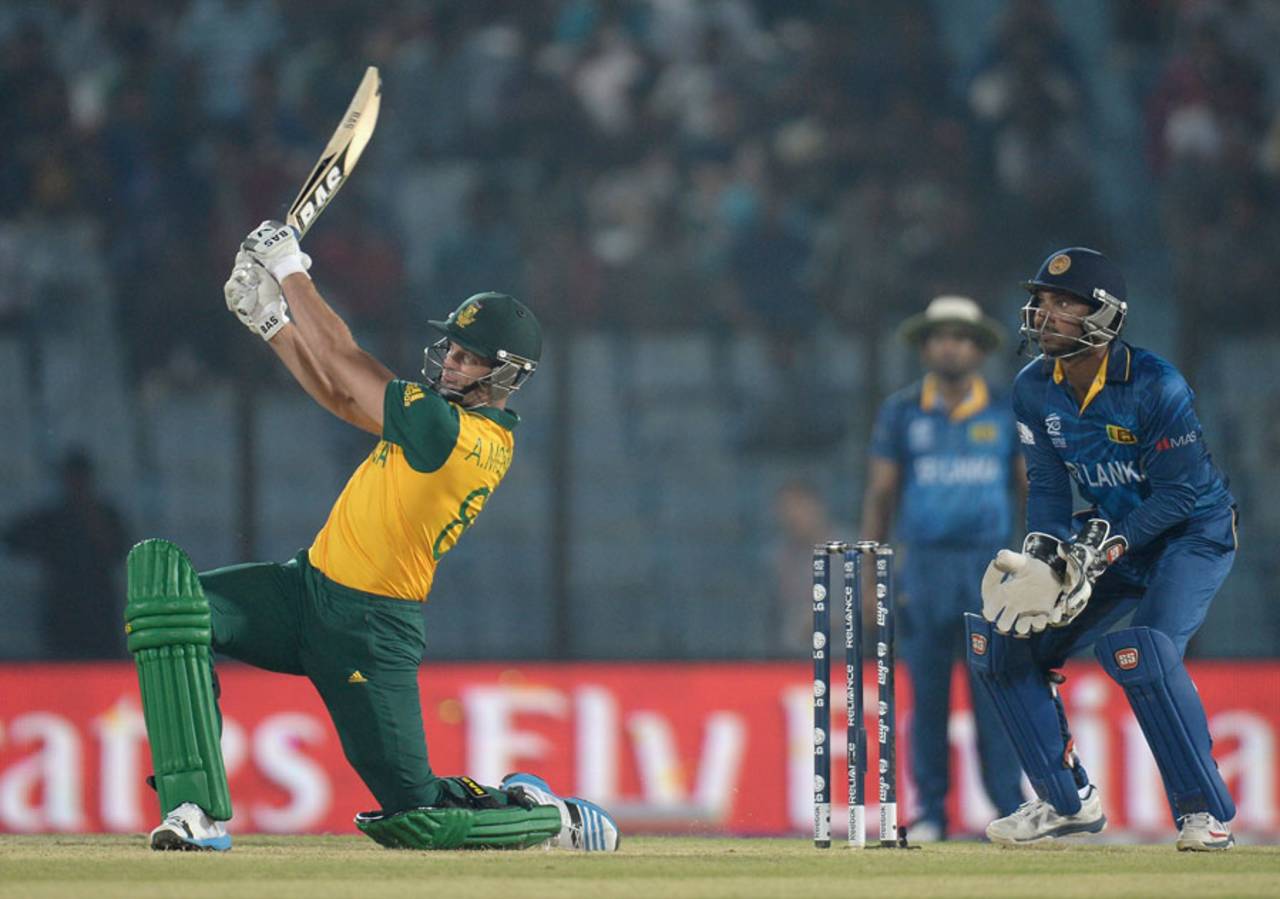Limited-overs cricket became much beloved because, among other things, it delivered the close finish. The last-over variant - a desperate scraping together or denial of the runs required in the last six deliveries - is, of course, the one most commented on and written about. Indeed, one not very intelligent claim made for the greater desirability of the T20 format over the 50-overs variant was that it promises more of these kinds of climaxes, leading to the inevitable reductio ad absurdum that we could get last-over finishes in every game by reducing the number of overs to one a side.
But there are other kinds of close finishes in limited-overs cricket: the most prominent in recent times has been the dramatic hard-hitting chase of an improbable number of runs in the last few overs.
West Indies' assault on Australia in the current World T20 is but one memorable example. Especially in T20 cricket, the scoring of 20 or 30 runs off the last two overs has become more common; in 50-overs cricket, these are a little rarer. The late collapse of a batting side is not considered as remarkable. I suspect this is because the chasing batsmen are supposed to be taking greater risks in any case and are thus more vulnerable. But Dale Steyn's last-over strangulation of New Zealand
in Chittagong did not fail to evoke admiration because the maestro was defending a small number of runs and did so by taking wickets.
The last-minute assault of the kind noted above occurs more frequently not just because batsmen hit harder and further now in limited-overs cricket but because teams bat deeper and carry dangerous hitters well down the order. There are few batting passengers in a limited-overs side. Fielding sides, spectators, and commentators are well aware of these changes. There is little complacency displayed by any of these demographics as a limited-overs game heads towards its denouement.
These brief notes bring me to my central questions today: 1) If statistics do reveal that last-over finishes are becoming more common - not just in T20 but in 50-over cricket as well - will we become jaded? 2) What other kinds of close finishes might we consider enthralling and look to in the future?
In response to the first question, I don't think so. The bar will continue to be set higher in terms of spectator and team expectations, of course - for example, chasing down ten runs in the last over might come to be not too noteworthy in the near future. But this will make defences more interesting - and if the non-marginalisation of the limited-overs bowler is any indication, we can rely on that tribe to develop new additions to their bag of tricks to combat increasingly rampant batsmen. And I don't think fans of winning sides will ever have a jaded reaction to their teams' successes; winning overcomes all other considerations.
As for the second question, I hope teams will continue to carry batsmen of merely modest ability. Their presence late in the order adds an element of uncertainty to the closing of a chase that makes for great cricket: handing back the strike to an established batsman, transcending their limitations to make a bold stroke or two, or most gloriously of all, becoming an unlikely hero by being the finisher themselves. In a related context, baseball purists dislike the American League's designated hitter rule, because it does not permit the pitcher - never a distinguished batter - to make a batting contribution to the game, thus blocking enjoyable avenues of improbability. (Among my most enjoyable baseball memories is Orel Hershiser's batting in the 1988 World Series against the Oakland Athletics.)
Limited-overs cricket has defied many predictions and prognostications about its future and effects. As I note here, the non-marginalisation of the bowler and the possibility that some bowlers will retain their mediocre batting ability should give all cricket fans hope it will continue to do so.
